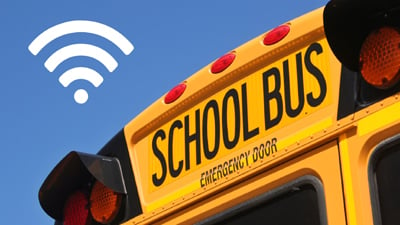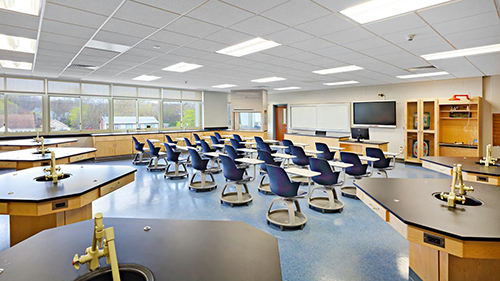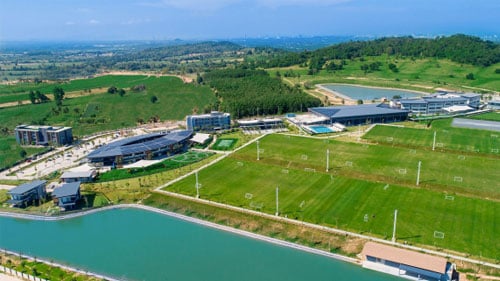Welcome to RUCKUS Networks, part of CommScope's world-leading portfolio of networking solutions. Learn more.

Power digital learning with a solid network foundation
Around the world, educators and administrators work tirelessly to achieve digital equity for their students. RUCKUS Networks helps primary and secondary educators pursue this important goal as their trusted partner. A RUCKUS® network provides a solid foundation for every stage of your digital transition, delivering “anywhere, anytime, on any device” access that every student needs to move forward in life with confidence.
Close the digital divide with RUCKUS technologies that enable:
- Indoor and outdoor Wi-Fi
- Wired and wireless connectivity
- IoT integration
- Secure onboarding of students and devices
- Cloud-based services
- Analytics
- Security and safety
A RUCKUS network in your school
Simplifies E-Rate purchases
E-Rate programs are invaluable assistance for U.S. schools, but applying is not always an easy process. You don’t want to miss a filing deadline or a single dollar of savings. RUCKUS Networks has created several tools to simplify the application process, including:
- An ordering guide for products and services available through E-Rate funding
- A budget calculator from E-Rate Profit Works
- An E-Rate eligibility product search tool
- A dedicated funding support team to help you with the application process
Promotes digital inclusion
There are five stages for digital transition, but that doesn’t mean it’s an orderly transition. In fact, it can be downright messy, as demonstrated by the urgent rush to remote learning during the pandemic. A RUCKUS network can reinforce your progress so you can:
- Use any combination of virtual and hybrid school teaching models
- Support online curriculum, testing and learning management systems, esports and more
- Meet BYOD demands with secure network onboarding using Cloudpath® Enrollment System
- Expand wireless coverage to support classroom, school and district-wide mobility
- Deploy temporary or mobile wireless hot spots to underserved communities
Explore digital equity from network design to funding
Puts esports on a winning digital field
The momentum for esports in education is unstoppable—unless your network stops it. Gamers can’t compete if they’re dealing with connection problems, latency or jitter. That’s why a successful esports program depends on a reliable, high-performance network. The same RUCKUS network that supports your academic programs can also handle the demands of esports, including:
- Modular switching with the scalability for multigigabit speeds
- RUCKUS Cloudpath Enrollment System for secure guest access
- RUCKUS Analytics for insights into network performance, applications, utilization and more
- Future proofing with Wi-Fi 6/6E access points (APs), 90-watt PoE, IoT-enabled APs and upgradable uplinks
Enables more effective responses to vaping incidents
Vaping prevention efforts can lead to frustrating “cat-and-mouse” chases. With our partners, we enable a more effective approach—integrating vaping sensors and surveillance cameras into your RUCKUS wireless network. Enforcement staff receive a time-stamped image of students in the vicinity of the vaping alarm so they can act before the chase begins. This integrated solution improves response because:
- It’s less disruptive so, when there’s a vaping alert, staff don’t need to rush to the scene
- Alarms can be coordinated with surveillance footage to help identify offenders
- Clear evidence reduces the likelihood of peer bullying that keeps bystanders silent
- Visual evidence can facilitate more positive discussions with students, parents and guardians.
Download our solution brief on vaping and bullying detection
Customer Stories

Leigh Academy
From 6 to 25 academies, with 20K students & 2.5K staff. Discover the advantages of unified Wi-Fi & Switching from one vendor. Simplify & excel!
Bonneville Joint School District #93
A public school district in Idaho delivers cost-effective, consistent wireless connectivity to 14,000 students at 26 campuses with RUCKUS Cloud.
New Zealand Ministry of Education
Learn how New Zealand’s Ministry of Education teamed up with N4L and RUCKUS to provide equitable access for all students in all the schools with fast, reliable connectivity for digital learning.
Herricks School District
Herricks School District gets network capabilities beyond expectations with RUCKUS Wi-Fi and switching.
Rugby School Thailand
Learn how RUCKUS technology provided seamless connectivity to the Rugby School Thailand, an international community that goes beyond the classroom.
We're ready to help
RUCKUS builds and delivers purpose-driven networks that perform in the tough environments of the industries we serve. Contact our sales team to find out how we can help you.
Featured Resources

RUCKUS is your go-to E-Rate partner
Learn why RUCKUS should be your go-to E-Rate partner. Our E-Rate team is here to help you navigate the process.

What's next for primary education?
Learn about the top trends that are expected to impact primary education in 2024 how it will affect your network infrastructure.

Top 5 Issues Facing K-12 Education Wi-Fi Networks
Operating a school or district’s Wi-Fi network is no easy task, but RUCKUS has the solutions to help. Read about the issues that face primary education networks and the solutions to solve them.

Stimulus Funding
US-based stimulus funding is available to help secure and source IT network infrastructure projects. Understand and navigate funding with the CommScope Funding Program.

Can school bus Wi-Fi help address digital equity?
One of the first things we’ve seen is equipping buses with Wi-Fi and LTE backhaul (such as the RUCKUS M510 access point) and park it in neighborhoods where families lack internet access serving as a hotspot for the students.

Future Proofing K-12 Networks
As schools undergo a digital transformation, it is critical to have network infrastructure that can support the growing demands. In this engaging talk, discover the network enhancements that can better support digital teaching, learning and collaboration.




